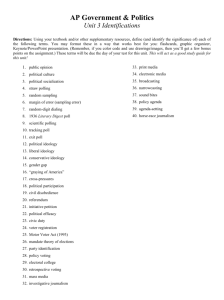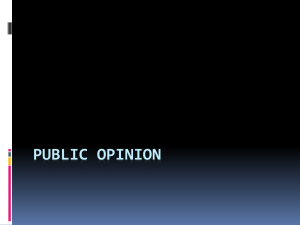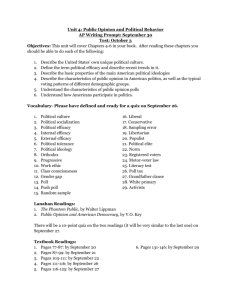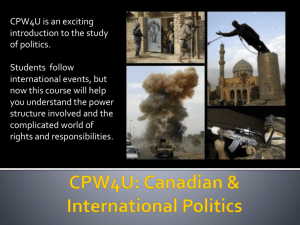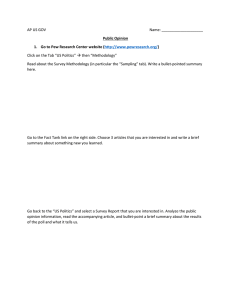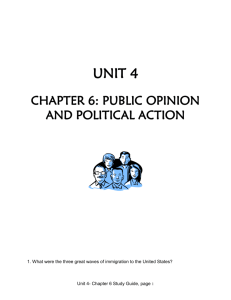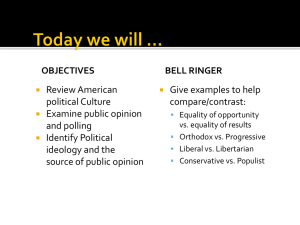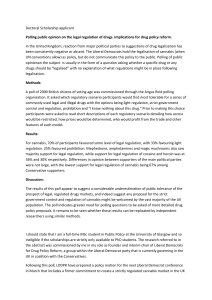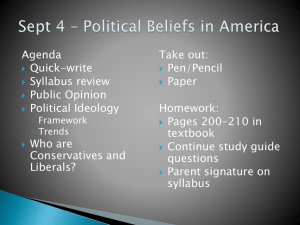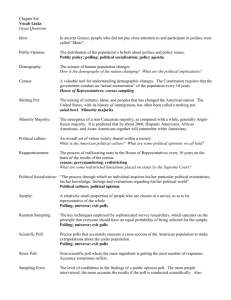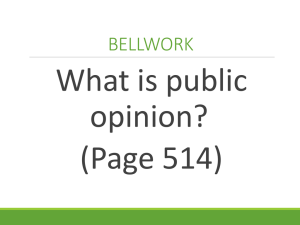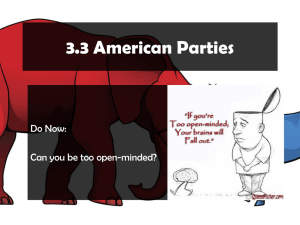4. 5. Political Culture & Public Opinion
advertisement
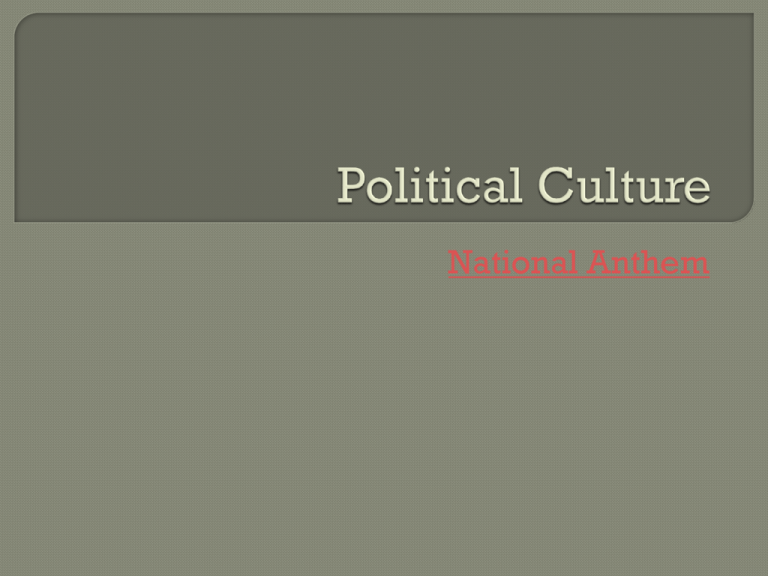
National Anthem Although America is very diverse, it is united under a common political culture. A political culture is a common set of beliefs and attitudes about government and politics. I am very patriotic I am proud to be American We should be willing to fight for our country whether it is right or wrong Majority rule/minority rights • Minority rights must be guaranteed Equality • Equality of every person before the law Private property • Ownership of property is protected by law Individual freedoms • Guarantees civil liberties Compromise • Allows for all interests to best benefit society Limited government • Government powers are restricted to the powers given to them by the people Process by which citizens acquire a sense of political identity. Begins early in childhood and continues throughout a person’s life Allows citizens to become aware of politics, learn political facts, and form political opinions. Family (#1) • Strongest when both parents identify w/same party Schools • Teach patriotism, governmental functions, & encourage participation Group Affiliation • Interest groups, labor unions, etc. Demographics • Occupation, race, gender, age, religion, region of country Mass Media Events Definition: citizen’s capacity to understand and influence political events Political efficacy has two parts 1. Internal efficacy a) Confidence in one’s ability to understand and influence events b) Currently, about the same as in 1950s 2. External efficacy a) Belief that system will respond to citizens b) Not shaped by particular events c) Declined steadily since the 1960s d) Americans seem to believe that government is becoming too big to respond to individual preferences Definition: A collection of shared attitudes of many different people in matters relating to politics, public issues, and the making of public policy. Shaped by people’s political culture and political socialization. • Can be analyzed according to: Distribution (physical shape of responses when graphed) Intensity (how strong the opinions are held) Stability (how much the opinion changes over time) Modern polling began in the 1930’s when George Gallup helped develop the use of a scientific polling process: • Sampling those chosen to participate in a poll must be representative of the general population • Preparing valid questions Directions should be clear & questions should be phrased not to lead participants to answer a certain way • Controlling how the poll is taken The respondent should have some knowledge of the issues addressed in the poll • Analyzing and reporting results Be sure not to report non-accurate information An ideology is a consistent set of beliefs. A political ideology is a set of beliefs about public politics and public policy that creates the structure for looking at government and public policy. Political ideologies can change over time. Differences in ideology generally occur in the arena of political, economic, and social issues. Radical Liberal Moderate Conservative Reactionary *Analyze chart on page 209 to summarize each “level” of the political spectrum* Radical • Favors rapid, fundamental change in existing social, economic, or political order; may be willing to resort to extreme means Liberal • Supports active government in promoting individual welfare and supporting civil rights, and accepts political & social change w/in the existing political system Moderate • Falls between liberal & conservative & which may include some of both; usually thought of as tolerant of others’ political opinions & not likely to hold extreme views on issues Conservative • Promotes a limited governmental role in helping individuals economically, supports traditional values and lifestyles, favors a more active role for government in promoting national security, and approaches change cautiously Reactionary • Advocates a return to a previous state of affairs, often a social order or government that existed earlier in history Create your own “Public Opinion Poll” • Must follow George Gallup’s scientific polling process • Must choose at least 20 people to poll • Once you have the results, create a graph illustrating the results
